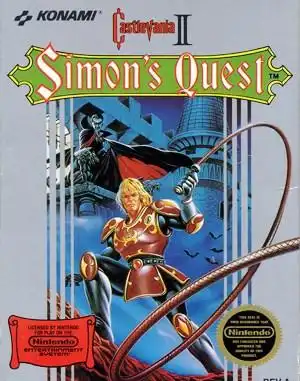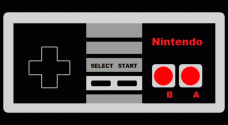Stepping back into the late 1980s on the Nintendo Entertainment System often means revisiting familiar heroes and villains. But few sequels stirred up as much debate and confusion as Castlevania II: Simon's Quest. It wasn't just more Castlevania; it was... different. A radical departure that left many kids scratching their heads, yet held a strange, compelling allure that kept us playing.
This was the game where Simon Belmont wasn't just whipping through linear castles. He was exploring towns, talking to villagers (some of whom definitely weren't helping), buying items, and trying to piece together a world cursed by Dracula's lingering power. It was ambitious, frustrating, and undeniably memorable.
Acknowledging the Controversy: Why the Bad Rap?
Let's be honest: Castlevania II: Simon's Quest has a reputation. It's often called the "black sheep" of the NES trilogy, sometimes even the whole series. Why? Primarily, it boils down to two major points:
- The Translation: The English localization was... rough. Clues from townspeople were often garbled, misleading, or just plain nonsensical ("Wait for a soul to rise while you kneel by the lake"? What?). This made figuring out essential steps incredibly difficult.
- The Cryptic Secrets: The game required specific, often counter-intuitive actions to progress. Kneeling by a lake with a certain crystal, whipping seemingly random blocks, or waiting for the day/night cycle to shift at a particular spot were necessary steps that the game barely hinted at, if at all.
For a kid in the '80s without the internet, these roadblocks were immense.
What Made Simon's Quest Different (and Interesting)?
Despite its flaws, Simon's Quest wasn't just a failed experiment. It introduced elements that would become foundational for the series' future success, particularly the "Metroidvania" style popularized later:
- Non-Linear Exploration: Instead of a straight shot to Dracula's castle, you had an overworld map connecting towns, forests, swamps, and mansions. You needed to find and use items to access new areas.
- RPG Light: Simon gained experience points from defeating enemies, leveling up his defense. Hearts weren't just sub-weapon ammo; they were currency used to buy items and upgrades in towns.
- Day/Night Cycle: A unique feature where towns emptied, enemies became tougher (and gave more hearts), and some secrets only appeared when darkness fell. While the transition screen was slow, it added a distinct flavor.
- Item Progression: Finding and upgrading whips, using different crystals, and managing consumables like stakes for defeating bosses added depth beyond the first game's simple item drops.
These ideas, even if imperfectly implemented, showed a willingness to evolve the Castlevania formula beyond its platformer roots.
The Infamous Clues and How We Solved Them
The most notorious aspect remains the cryptic nature of progression. How were players supposed to figure out things like:
- Kneeling at Yuba Lake with the Blue Crystal?
- Kneeling at Deborah Cliff with the Red Crystal/Orb?
- Whipping a seemingly solid wall to reveal a hidden merchant or clue book?
- Finding the hidden "TO REPLENISH EARTH, KNEEL BY THE LAKE WITH THE BLUE CRYSTAL" clue buried in a random forest block?
This is where the retro gaming community, even back then, shone. Before GameFAQs, before YouTube walkthroughs, we had:
- Nintendo Power: The legendary magazine often provided maps and hints, sometimes outright telling you the obscure secrets. The iconic two-page map of the overworld was a lifesaver.
- Friends on the Playground: Sharing secrets discovered through sheer luck or magazine tips was the original social network for gamers. "Dude, you gotta kneel at the lake!"
- Trial and Error (Lots of It): Sometimes you just got lucky. Wasting Holy Water on every block eventually paid off, or you accidentally knelt in the right spot.
Beating Simon's Quest back then wasn't just about skill; it was about community knowledge and perseverance against frustrating design choices stemming from a poor translation and lack of in-game guidance.
Replaying Simon's Quest Today
With the advent of emulation, digital releases on platforms like GOG or console collections, and fan-made ROM hacks, revisiting Castlevania II: Simon's Quest is a very different experience.
- Emulators & Save States: No more starting over! Experimentation is easier.
- Online Guides: Every secret, every misleading clue, is explained in detail online. The mystery is gone, but the frustration can be too.
- Fan Translations & Hacks: Projects exist that fix the infamous translation errors, add in the missing Japanese map, and even tweak mechanics. Playing a retranslated version reveals a game that was perhaps intended to be less obtuse, though still challenging.
Playing the original NES cartridge today, knowing all the secrets, highlights how the infamous difficulty wasn't from combat or platforming (which is often easier than CV1), but purely from navigation and deciphering clues.
Its Legacy and Influence
Despite its divisive reputation, Castlevania II: Simon's Quest is crucial to the series' evolution.
- The open world, town exploration, and RPG elements directly paved the way for Castlevania: Symphony of the Night and the entire 'Metroidvania' genre that followed.
- Its memorable soundtrack, featuring tracks like "Bloody Tears" and "Silence of the Daylight," is still beloved and frequently remixed or referenced in later games.
- It showed that Castlevania could be more than a linear action game, opening the door for future innovation.
Is Simon's Quest Worth Playing Today?
For retro enthusiasts, absolutely. Just understand what you're getting into.
- If you want the "authentic" frustrating experience, play the original NES version without guides (good luck!).
- If you want to appreciate its design ideas without the translation headache, try a fan-translated ROM hack.
- If you just want to see its place in history and enjoy the atmosphere, play it on a modern collection or emulator with a guide handy.
It's a flawed gem, a product of its time, and a fascinating look at a classic series trying something completely new. It might not be everyone's favorite, but Castlevania II: Simon's Quest holds a unique, important spot in gaming history that's worth exploring.
FAQ
Q: Is Castlevania II: Simon's Quest a Metroidvania? A: It's often considered a precursor or early example, introducing non-linear exploration, item-based progression, and RPG elements that influenced later, more defined Metroidvania titles like Symphony of the Night.
Q: Why are the clues in Simon's Quest so bad? A: The primary reason is a poor English translation from the original Japanese script, which resulted in garbled, misleading, or incorrect information being given by townspeople and in item descriptions.
Q: How do you beat Deborah Cliff in Simon's Quest? A: You need to kneel at the edge of the cliff while equipped with the Red Crystal (or Red Orb). This action isn't clearly explained in the original game's clues.
Q: Does Simon's Quest have multiple endings? A: Yes, it has three different endings based on how quickly you complete the game. Finishing faster results in a more positive outcome for Simon.


